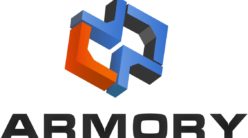Background
About a month ago, I found this little gem on reddit. Named after the computer with endless quips in Iron Man, Jarvis from Conalytics is touted as a ‘Visual, In-Depth’ Block exploring tool! So naturally, I had to sign up to try it out and see what all the fuss was about (For Science!!!!) Fast forward 28 days, and here I am, with preliminary analysis and a review.
Under the hood: LoDash, MomentJS and Jquery. My conclusion: Mean Stack, Likely Node.js.

Since MagicalTux thinks he can talk about the state of Bitcoin Exchanges, I chose to use the Mt. Gox address, found here, to Analyze and ‘Visualize’ where where the 800K or so coins are. Well, as you can see from the picture above, Information OVERLOAD! I’m still working through how to make sense of what, By the way, here is the page prior:

Okay so Looks Like I found the Visualize Button!:

On the upper right side, right below the search box, is a panel, named cards, which has a green pentagon shape, click this and you are taken to a visual explorer menu, albeit with more controls to figure out (literally this is information overload – by the way,my mouse was over the pentagon and the grey box in the picture above is a tooltip – it disappears when you move the mouse).
Now, rather than touting off what each feature does, I’ve decided to upload a short video of me hovering over each of the tools on the explorer and what they do.
As you can see, I changed the address at this point to see if the data presented was indeed correlated to the block-explorer or if it was just a Mockup. Looks like it was really pulling from my transaction history!
The Good Parts:
This tool is nothing short of AMAZING. I needed a good 20 minutes to figure out how it works. Basically there’s three controls you need to be aware of: Step forward and Step Backward and Re-Root. Through stepping forward, we can cherry pick various bitcoin addresses of funds that came into mt gox – transactions of any can do, but I decided to go with this one for instance:
43a75decfb7644bf90ff6ba71c4be694937941f9349785aa576a2d0ef956eebd
Cool right?
There’s also filters for the right side on the transactions table view:

Through Stepping Backward, we can view transactions occurring before the specific transaction date. Keep in mind, that the visualizer uses Transactions as point to point nodes, NOT addresses as we often consider when pointing users to look at transactions on a block explorer. Re-rooting allows you to select any given node within the visualizer and prune (delete) other nodes so that you can free up resources and focus on that specific transactional data.
Take note of the denominations – they can be adjusted from Bitcoin to Bits to Satoshi using the green currency symbol icon after the numbers, I believe their systems round to the nearest approximation and select the proper display format so keep that in mind with your analysis.
Now for the bad parts:
This is obviously still in BETA – many of the features are not yet operational – the Date sorting at the top doesn’t yet work or doesn’t appear to, the transaction history shown on the left and in the grid itself seem to only pull data the 1st time. My attempts to lookup other addresses after looking up the 1st only updated the transactions data (where the green ‘card’ button is located) but not the historical data (on the lower left corner) nor the actual ledger of transactions (looks like a spreadsheet on my 1st photo).
I noticed it seemed to lockup at a few points, which is okay I was able to log back in and continue where I left off. There was a point to where it got a little crazy and hiccuped but I blame this on the limits of my local system resources. MY browser stopped responding for a half second but quickly resumed before I could snap the screenshot.
Also, I probably tasked it much more than it liked when pinging The Mt. Gox address. It seems like to get proper data I had to logout and log back in otherwise it would artifact past data whenever attempting a fresh lookup.
Also, this tool is NOT for the novice. I feel that though there were too many different data points and as this is a BETA stuff wasn’t working where the average user may think it was and may just be confused. For instance, it seems that sometimes the system locks up when trying to move forward by 1 node instead of all nodes. Furthermore, I was unable to determine where the missing Mt Gox Coins (650K BTC) coins could have accumulated to.
Although from this post on Bitcointalk, I looked up the 2nd address and saw that at one point it received 50K BTC, so I reversed it around a bit in the block explorer and eventually it lead me to a transaction back on March 7th 2014 with a related address for 180K bitcoin being broken up into smaller chunks – this 180K BTC came from another block of about 500K bitcoin which was in Karpeles possession back in 2011.

In closing, I’d like to note that this is a remarkable block explorer and I’m excited to see how it they deploy it en masse.





